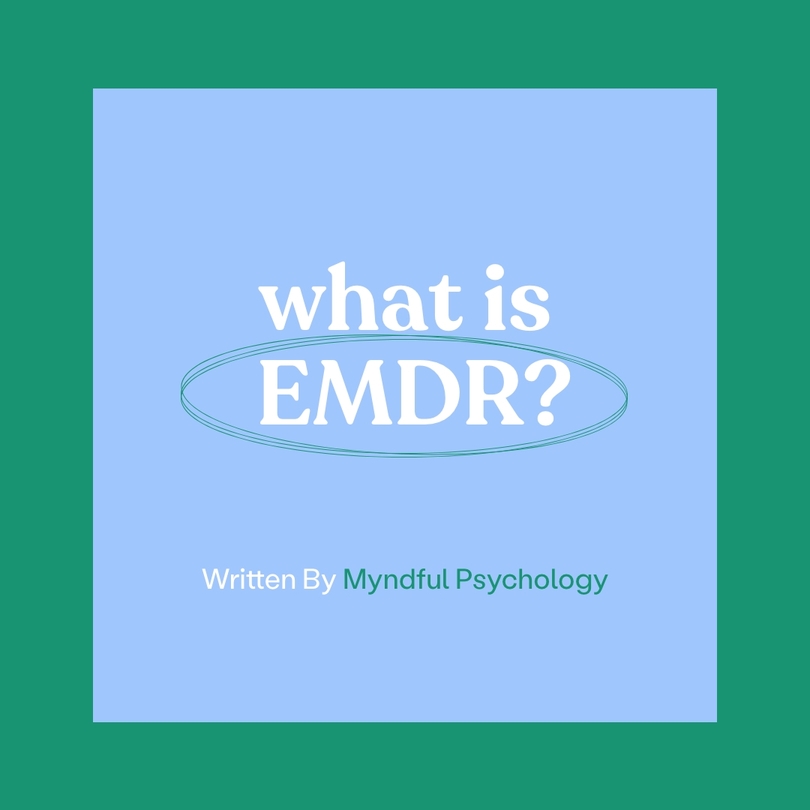What is EMDR
Eye Movement Desentization Reprocessing (EMDR) is an evidence-based psychological therapy for treating PTSD and complex trauma.

Dr Aneta Kotevski
February 23, 2024
4 min read
#trauma-and-ptsd

Eye Movement Desentization Reprocessing (EMDR) is an evidence-based psychological therapy recognised by the World Health Organisation (WHO) as the first line treatment for trauma. It was first developed by Francine Shapiro in the late 1980s and has since gained widespread acceptance in treating single incident, Post Traumatic Stress Disorder, and complex trauma (prolonged exposure to traumatic events or situations, often beginning in childhood and continuing into adulthood). It also has benefits for treating anxiety, depression, and chronic health conditions.
Help with processing trauma
Our brain has a good capacity to heal from stressful events, just like the body does. However, when traumatic experiences or highly stressful events occur, they can become ‘stuck’ in the brain’s processing system which can present as intrusive memories, flashbacks, physical pain or tremors, and emotional distress. When this happens, memories are stored in their raw, unprocessed, form. These trauma memories are easily triggered in daily life events. Memories can replay and cause distress over and again.
EMDR can help a person to process these traumatic memories, associated emotions, and body sensations, allowing them to integrate the experiences in a healthier way.
During an EMDR session, the psychologist will guide their client through a series of procedures that involve bilateral stimulation such as rapid eye movements, auditory tones, tapping or tactile sensations. Bilateral stimulation is effective because it taxes the working memory, allowing a reduction in the vividness and emotional charge of traumatic memories.
An event is ‘processed’ when a person:
-
Recalls it as distant memory
-
Recalls the event or is reminded of it by a present event (trigger) and no longer experiences significant emotional distress
-
Can form healthier thoughts and beliefs about oneself when reminded of the memory
The EMDR process consists of 8 phases
1st Phase: Client History and Assessment
The psychologist conducts a comprehensive assessment that determines:
-
The current issues and history of the trauma
-
Suitability for EMDR therapy
-
Mapping out the trauma memories (from the earliest memory to the most recent) and the negative/positive beliefs about particular events
-
A treatment plan with consideration to past and present issues, and future clinical issues
-
Positive or or healthy aspects of their client's personality and life experience
2nd Phase: Procedural Preparation
The psychologist helps their client develop coping skills and relaxation techniques to manage emotional distress and prepare for the processing phase.
3rd Phase: Target Assessment
The psychologist assists their client to identify target memories for EMDR processing from the negative events in that person’s life.
4th Phase: Desensitisation
The client recalls the target memory while simultaneously engaging in bilateral stimulation or eye movements. This process allows for the reprocessing of the memory, associated emotions and body sensations resulting in distancing and emotional desensitisation effects.
5th Phase: Integration of the Positive Belief or Installation
Positive beliefs and coping mechanisms are reinforced to replace negative beliefs associated with the traumatic memory. Here we see an integration of the dysfunctionally stored memory within already existing networks containing healthy and adaptive beliefs and thoughts about oneself.
6th Phase: Body Scan
The client is invited to scan their body for any physical sensations to ensure that there are no lingering areas of distress or tensions related to the target memory.
7th Phase: Debrief and Closure
The session concludes with the client returning to a state of relaxation and stability. At this stage, the person undergoing EMDR will often feel tired. Coping strategies are discussed, reinforced and consolidated.
8th Phase: Re-evaluation
Subsequent sessions usually involve reassessment of progress and identification of new targets for processing. These may include past memories, current and future events. Treatment is often complete when healthy and adaptive behavioural and belief patterns are adopted for future events or situations.
Lasting Change
Changes with EMDR treatment are profound and long lasting. This is because you are addressing core issues at the root of the problem, rather than just managing symptoms.
It may take some time for some people to develop a sense of trust and safety with their psychologist. The psychologist must also perceive their client as safe and competent. When a person commences EMDR, they are invited to be open and willing to experience a high level of emotion when processing a trauma memory.
EMDR can help a person who has experienced trauma to process the associated memories and emotions. Over time the distress and lasting effects caused by the trauma can be reduced, and be integrated into our past and memories in a more healthy way.
How can we help
At Myndful we have psychologists who are qualified in treating trauma using EMDR. If you, or someone you love has experienced trauma in the past, we can help.
Aneta is a registered and endorsed clinical and health psychologist and AHPRA board approved supervisor in clinical and health psychology. She is also a member of the EMDR Association of Australia.